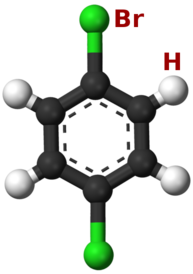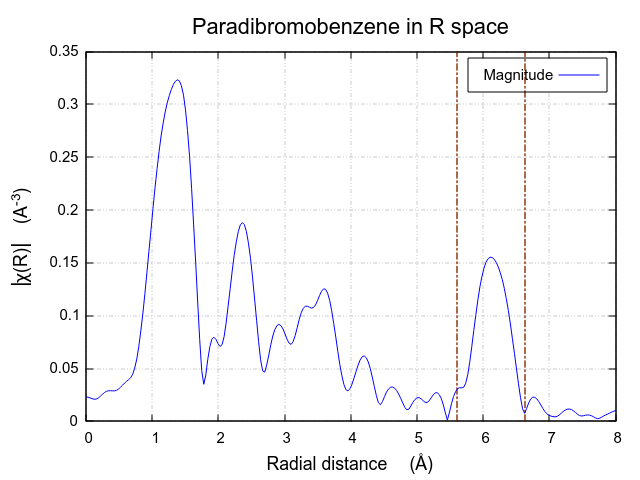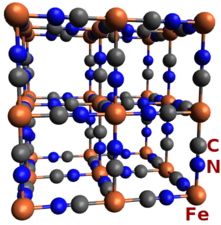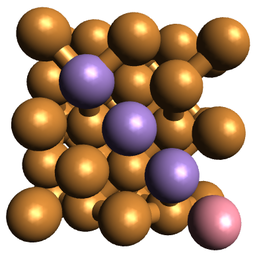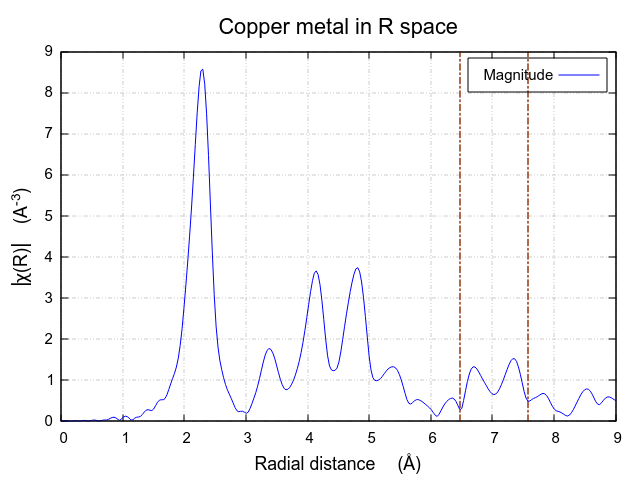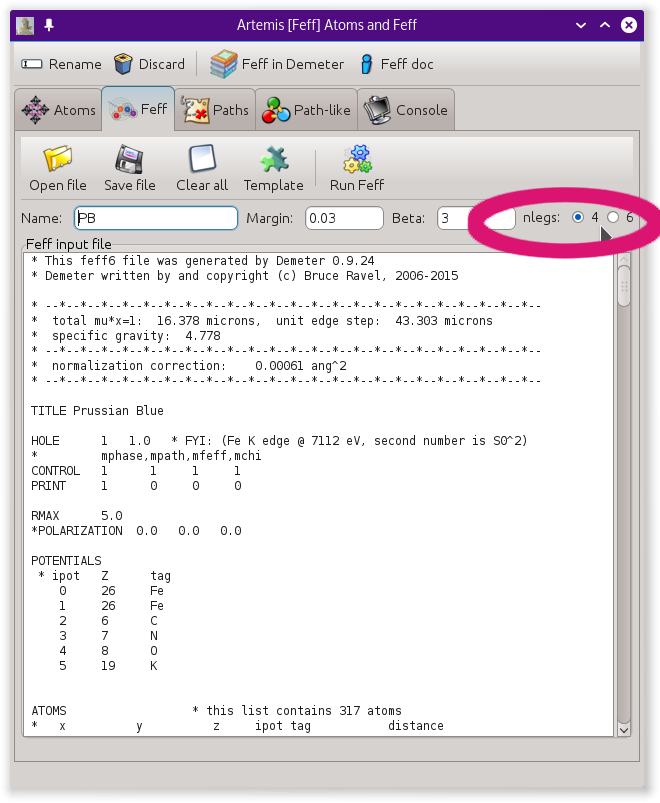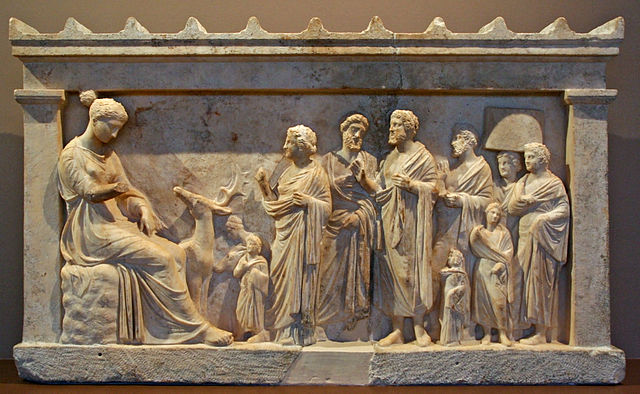15.11. 5 & 6 legged paths¶
15.11.1. Examples of situations requiring consideration of higher order paths¶
Normally, the pathfinder in ARTEMIS's implementation of FEFF only considers up to triple scattering (4-legged) paths. This is for two reasons. First, ARTEMIS's pathfinder is a bit slow. Second, it is rather uncommon to need higher order paths in an EXAFS analysis. Here are a few examples.
Paradibromobenzene is a benzene molecule – a ring of 6 carbon atoms – with two of the hydrogen ligands replaced by bromine. The bromine atoms are in the para (1-4) arrangement, i.e. on opposite corners of the benzene ring.
Being the only heavy scatterer in a rigid structure, the second bromine atom is quite evident in the EXAFS, giving rise to the large peak just above 6 Å in the χ(R) data shown below.
That big peak resulting from the second bromine atom includes not just the single scattering contribution, but a number of collinear multiple scattering paths. This includes the 5-legged paths that scatter from both carbon atoms on the way to (or from) the bromine atoms, and the 6-legged path that includes forward scattering from both carbon atoms in both directions.
5- and 6-legged paths are, in general, only important in EXAFS for structures that are both rigid and have 4 collinear atoms. This is pretty high bar, which is why examples are few and far between. That said, here are a couple more examples.
Prussian blue, ferric ferrocyanate, represents a class of framework-structured materials that have metal atoms at corner positions in the unit cell. These metal atoms are bridged by cyanide molecules. This is much like a rocksalt structure, but with the cation replaced by a cyanide molecule oriented in the direction of the bond.
The metal anions are separated by about 5.1 Å, thus are at a distance that can easily be resolved and analyzed with good EXAFS data. To interpret that part of the EXAFS signal, however, it is necessary to consider all the multiple scattering paths involving the C, N, and Fe atoms. This includes significant, collinear 5- and 6-legged paths.
The final example is good ol' copper metal, which is often analyzed out to about 5 Å, a distance which includes 5 coordination shells and a number of double and triple scattering paths. To analyze farther in R, one eventual gets to the single scattering path which includes the face center atom in the diagonally adjacent cell. In the figure below, the absorber is represented by the pink atom. The distant neighbor is the farthest lavender-colored atom. To analyze the single scattering contribution from that distance would require consideration of all the multiple scattering among the pink and lavender atoms, which are collinear along that unit cell diagonal.
15.11.2. 5 and 6 legged paths in Artemis¶
Caution
Enabling the calculation of 5- and 6-legged paths significantly slows down the pathfinder calculation in ARTEMIS. If you are unsure whether you need 5- and 6-legged paths, you almost certainly do not want to do so!
The default behavior in ARTEMIS is to compute up to 4-legged paths. For any FEFF calculation, this can be extended to include 5- and 6-legged paths by selecting the 6 button, as indicated in the screenshot below. Note that this sets the order of scattering paths only for the current FEFF calculation. The default for all subsequent FEFF calculations will again be 4-legged paths. The aggregate calculation is always made with up to 4-legged paths.
Besides being slow, the other consequence of setting the upper order of multiple scattering to 6 is that the path list will be much longer and possibly more confusing. Really, truly! Don't use this feature of ARTEMIS unless you have a very good reason to do so.
Some configuration parameters that relate to choice of the order of multiple scattering:
- ♦Pathfinder→suppress_5_6_not_straight: When true, only consider 5- and 6-legged paths that have scattering angles within ♦Pathfinder→fs_angle (typically 20 degrees) of 0 or 180 degrees. That is, suppress all paths with angles far from forward and backward scattering.
- ♦Atoms→suppress_nleg_warning: When true, this will suppress the dialog box posted by ATOMS when you select the 6 button warning you against considering 5- and 6-legged paths.
- ♦Pathfinder→eta_suppress: If you need to consider nearly collinear paths in a structure with buckling of atomic planes, you may need to set this parameter to false. When true, it suppresses any path with a non-zero Eulerian η angle. In most cases, this is a good heuristic for removing irrelevant paths from the path list, however for orders of scattering above 4 and nearly collinear paths, this filter might remove desirable paths. Use this with caution as it will greatly expand the size of the path list.
DEMETER is copyright © 2009-2016 Bruce Ravel – This document is copyright © 2016 Bruce Ravel
This document is licensed under The Creative Commons Attribution-ShareAlike License.
If DEMETER and this document are useful to you, please consider supporting The Creative Commons.
